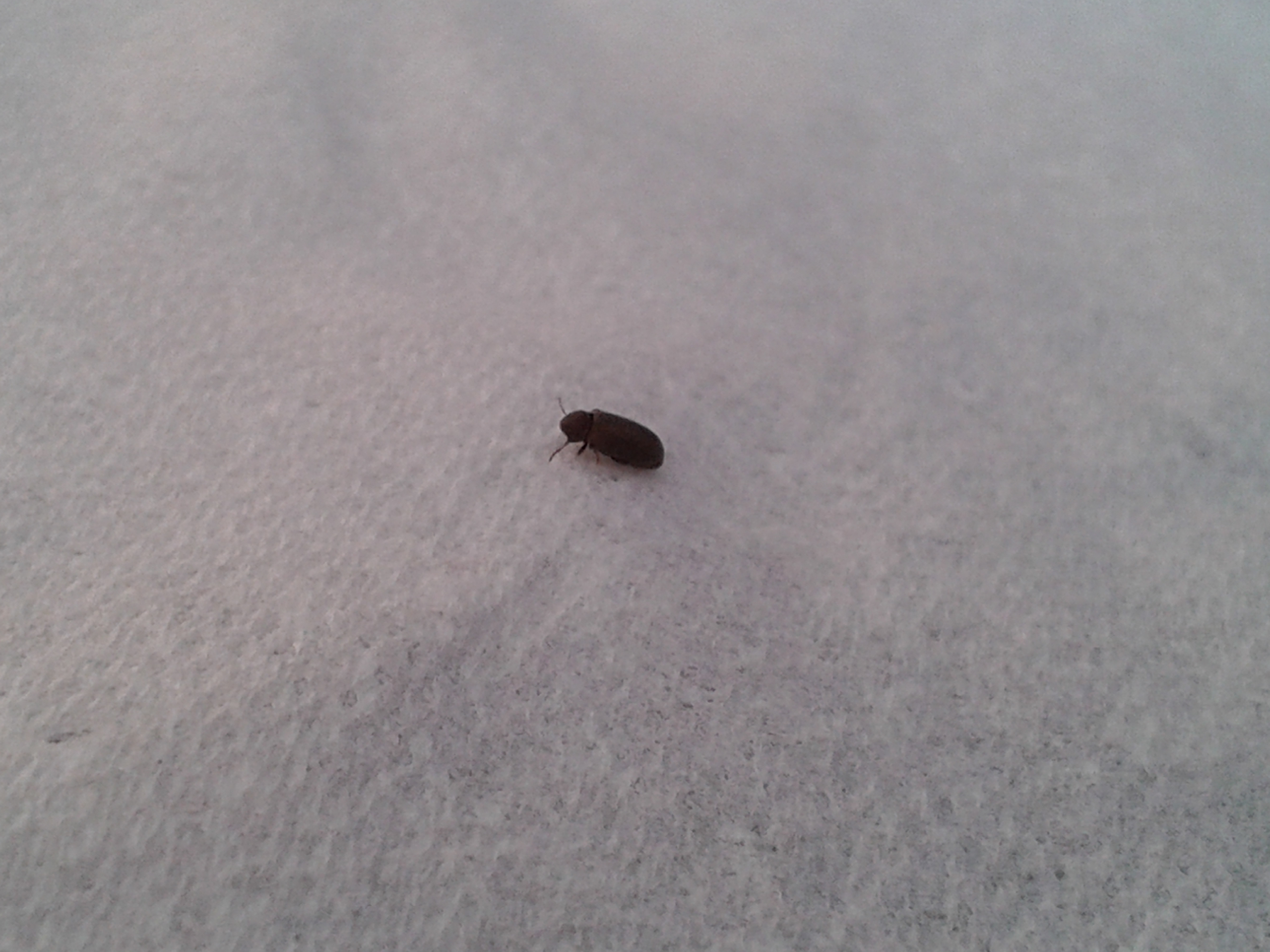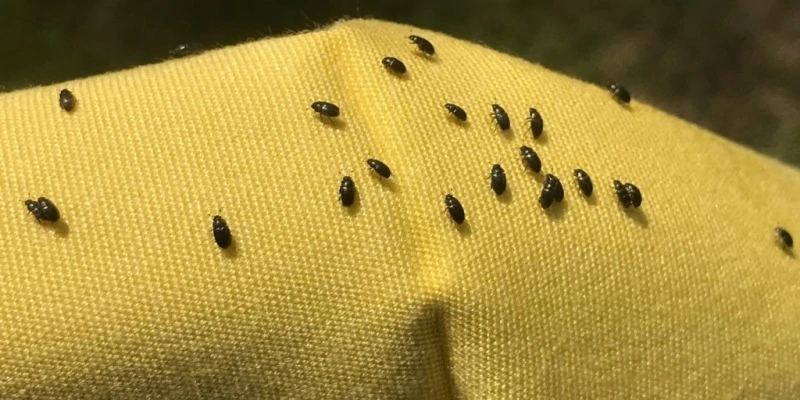Common Black and White Bugs in Bedrooms

Bedrooms are often havens of peace and comfort, but they can also be a breeding ground for unwanted pests, especially those that are attracted to the warmth, moisture, and food sources found in these spaces. While many bugs are colorful, some are black and white, and understanding their characteristics and life cycles can help you identify and address infestations effectively.
Common Black and White Bugs Found in Bedrooms
Black and white bugs can be a nuisance in bedrooms, causing discomfort and potential health concerns. Understanding their characteristics and life cycles can help you identify and address infestations effectively. Here are some of the most common black and white bugs found in bedrooms:
- The American Cockroach (Periplaneta americana): This large, reddish-brown cockroach is commonly mistaken for a black and white bug due to its distinctive light-brown markings on its pronotum (the shield-like plate covering the thorax). They are about 1.5 to 2 inches long and have wings that extend beyond the abdomen. American cockroaches are omnivores and thrive in warm, humid environments, making bedrooms a suitable habitat. They reproduce rapidly, with females laying egg capsules containing up to 50 eggs. The eggs hatch in about 40 days, and the nymphs go through several molts before reaching adulthood.
- The German Cockroach (Blattella germanica): These small cockroaches, measuring about 1/2 to 5/8 inch long, are light brown with two dark parallel stripes running down their pronotum. They are often found in kitchens and bathrooms but can also invade bedrooms, especially in areas with food crumbs or moisture. German cockroaches are also prolific breeders, with females producing up to 50 egg capsules in their lifetime. Each capsule contains about 30 to 40 eggs that hatch in about 28 days. The nymphs, which resemble smaller versions of the adults, go through several molts before reaching maturity.
- The Asian Lady Beetle (Harmonia axyridis): This small, dome-shaped beetle is usually orange or red with black spots, but some varieties are black with white spots. They are about 1/4 inch long and are known for their ability to fly. Asian lady beetles are beneficial insects that prey on aphids and other garden pests. However, they can become a nuisance when they enter homes in large numbers during the fall. They are attracted to warm, sunny areas, such as bedrooms, where they can overwinter. Asian lady beetles have a complete metamorphosis life cycle, meaning they go through four distinct stages: egg, larva, pupa, and adult.
- The Checkered Beetle (Cleridae family): These beetles are known for their distinctive black and white or black and yellow markings. They are usually small, measuring about 1/4 to 1/2 inch long. Checkered beetles are predators of other insects, including wood-boring beetles and bark beetles. While they are not typically considered pests, they can sometimes enter homes in search of food or shelter. Checkered beetles have a complete metamorphosis life cycle, similar to Asian lady beetles.
Causes of Black and White Bug Infestations

Black and white bugs, while generally harmless, can be a nuisance in bedrooms. Their presence can indicate an underlying issue that needs addressing. Understanding the common causes of infestations can help you prevent them and maintain a pest-free environment.
Factors Contributing to Infestations
Several factors can contribute to black and white bug infestations in bedrooms. These include:
- Poor Hygiene: Insufficient cleaning and the presence of food crumbs or spills can attract these bugs. Regularly cleaning your bedroom, especially under beds and in corners, is crucial for preventing infestations.
- Clutter: Excessive clutter provides hiding places and breeding grounds for black and white bugs. Keeping your bedroom organized and decluttered can significantly reduce their chances of infesting the space.
- Food Sources: Black and white bugs are attracted to food sources, such as crumbs, spilled drinks, and pet food. Storing food properly in sealed containers and cleaning up spills immediately can deter these pests.
Entry Points for Black and White Bugs
These bugs can enter bedrooms through various entry points, including:
- Cracks in Walls: Tiny cracks in walls and around windows and doors can provide easy access for black and white bugs.
- Open Windows: Leaving windows open, especially during the warmer months, can allow bugs to enter your bedroom.
- Gaps in Doors: Gaps around doors, even if small, can serve as entry points for these bugs.
Preventing Black and White Bug Infestations
Preventing black and white bug infestations in your bedroom requires a multi-pronged approach:
- Regular Cleaning: Vacuuming regularly, especially under beds and in corners, can remove food crumbs and dust that attract these bugs.
- Sealing Entry Points: Caulking cracks in walls and sealing gaps around windows and doors can prevent bugs from entering.
- Proper Food Storage: Storing food in airtight containers can prevent bugs from accessing it. Clean up spills immediately to avoid attracting them.
- Decluttering: Removing clutter from your bedroom can eliminate hiding places for these bugs.
- Window Screens: Ensure your windows have intact screens to prevent bugs from entering.
Managing Black and White Bug Infestations: Black And White Bugs In Bedroom

Once you’ve identified the type of black and white bugs plaguing your bedroom, it’s time to tackle the infestation. This section will guide you through various methods, from simple DIY solutions to professional pest control, empowering you to reclaim your peaceful sleep.
Identifying and Eliminating Black and White Bugs, Black and white bugs in bedroom
Identifying the specific type of black and white bug is crucial for choosing the right elimination strategy.
- Inspect the bugs closely: Pay attention to their size, shape, color patterns, and any distinctive features like antennae or legs.
- Search for signs of infestation: Look for shed skins, droppings, or egg sacs in corners, cracks, and crevices. These clues can help you determine the bug’s nesting areas.
- Consult online resources: Websites like BugGuide.net or the University of California Integrated Pest Management website offer comprehensive information and identification tools for various insects.
Once you’ve identified the culprit, you can begin the elimination process.
- Vacuuming: Regularly vacuum your bedroom, paying close attention to carpets, furniture, and baseboards. Dispose of the vacuum bag immediately to prevent reinfestation.
- Traps: Glue traps, sticky traps, or insect traps can be effective for capturing crawling insects. Place them strategically near areas where you’ve seen bugs.
- Pesticides: Use insecticides specifically designed for the type of bug you’re dealing with. Always follow the instructions on the label carefully, and ensure proper ventilation during application.
- Natural Remedies: Consider natural options like diatomaceous earth, which dehydrates insects, or peppermint oil, which repels them.
Professional Pest Control Services
For severe infestations or if DIY methods prove ineffective, seeking professional pest control services is recommended.
- Expertise: Pest control professionals have the knowledge and experience to accurately identify the bug species and recommend the most effective treatment methods.
- Advanced Techniques: They often use specialized equipment and pesticides that are not available to the public, ensuring a comprehensive and efficient solution.
- Long-Term Solutions: Professional services can help prevent future infestations by identifying and eliminating the root causes, such as moisture issues or entry points.
Health Risks Associated with Black and White Bug Infestations
Black and white bugs can pose health risks beyond mere annoyance.
- Allergic Reactions: Some bugs can trigger allergic reactions in sensitive individuals, causing symptoms like sneezing, itching, and skin rashes.
- Disease Transmission: Certain black and white bugs, like bed bugs, can transmit diseases like Chagas disease, although this is rare.
- Psychological Impact: Infestations can cause stress, anxiety, and sleep disturbances, affecting overall well-being.
Black and white bugs in bedroom – Finding black and white bugs in your bedroom can be unsettling, but it’s important to remember that they are often just seeking shelter and food. Perhaps you could escape the annoyance by booking a luxurious escape to a turtle beach resort 2 bedroom apartment , where you can relax and enjoy the beauty of nature without any unwanted guests.
After all, a peaceful environment is essential for a clear mind and a strong connection to the Divine.
Finding black and white bugs in your bedroom can be unsettling, especially if you’re unsure of what they are. While some bugs are harmless, others might indicate a larger pest problem. If you’re looking for a peaceful retreat away from any unwanted critters, consider a stay at the wyndham cypress palms 2 bedroom , offering a comfortable and spacious escape in Orlando.
No matter where you choose to stay, always remember to keep your living space clean and free of potential bug attractants, ensuring a peaceful and pest-free environment.
